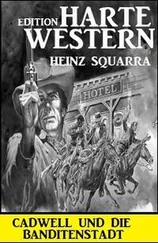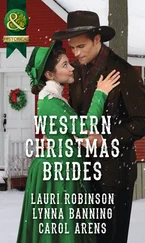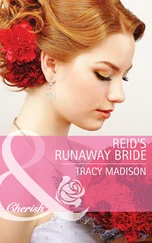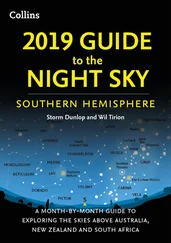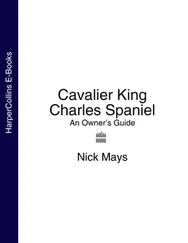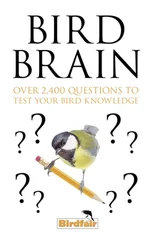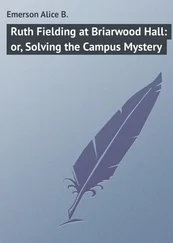Charles Reed - Western Bird Guide
Здесь есть возможность читать онлайн «Charles Reed - Western Bird Guide» — ознакомительный отрывок электронной книги совершенно бесплатно, а после прочтения отрывка купить полную версию. В некоторых случаях можно слушать аудио, скачать через торрент в формате fb2 и присутствует краткое содержание. Жанр: foreign_antique, foreign_prose, на английском языке. Описание произведения, (предисловие) а так же отзывы посетителей доступны на портале библиотеки ЛибКат.
- Название:Western Bird Guide
- Автор:
- Жанр:
- Год:неизвестен
- ISBN:нет данных
- Рейтинг книги:3 / 5. Голосов: 1
-
Избранное:Добавить в избранное
- Отзывы:
-
Ваша оценка:
- 60
- 1
- 2
- 3
- 4
- 5
Western Bird Guide: краткое содержание, описание и аннотация
Предлагаем к чтению аннотацию, описание, краткое содержание или предисловие (зависит от того, что написал сам автор книги «Western Bird Guide»). Если вы не нашли необходимую информацию о книге — напишите в комментариях, мы постараемся отыскать её.
Western Bird Guide — читать онлайн ознакомительный отрывок
Ниже представлен текст книги, разбитый по страницам. Система сохранения места последней прочитанной страницы, позволяет с удобством читать онлайн бесплатно книгу «Western Bird Guide», без необходимости каждый раз заново искать на чём Вы остановились. Поставьте закладку, и сможете в любой момент перейти на страницу, на которой закончили чтение.
Интервал:
Закладка:
OLD-SQUAW – LONG-TAILED DUCK
One of the very few ducks that change their plumage in summer and winter. Both sexes are marked similarly, but the female is somewhat duller and lacks the long tail feathers of the male. They are excellent swimmers and dive to great depths in search of their food.
Nest.– Generally concealed in the long grass near the water, made of grass and lined with feathers. 6 to 10 eggs (2.00 × 1.50).
HARLEQUIN DUCK
A beautiful and most attractive bird as shown in the illustration. It is not the colors alone that make them so attractive, but the way the colors are placed. The white being in long stripes, crescents or large spots, with black, gray and chestnut. They are usually found only in pairs among the swiftly running streams, or in the winter in small flocks on the coasts.
Nest.– Is nicely woven of weeds and grasses and lined with down placed on the ground in crevices of rocks or sometimes in the hollow of a tree. 5 to 8 greenish buff eggs (2.30 × 1.60).
Range.– Northern North America, breeding from Alaska to the central part of California among the mountain streams.
PACIFIC EIDER
This bird is in plumage like the Northern Eider, except that it has a black V-shaped mark on the throat. They nest sparingly on the Aleutian Islands, but in great numbers farther north.
Nest.– They make their nests of seaweed and grass, warmly lining same with down from their breasts. 6 to 8 eggs (3.00 × 2.00).
STELLER EIDER
A very beautiful species; head white, washed with greenish on the forehead and nape; chin, throat, neck, back, tail and crissum, black; under parts chestnut; wing coverts white, the long scapulars black and white.
Nest.– Are made of grasses and heavily lined with down. It breeds on the rocky coast and islands of Bering Sea. The six to nine eggs are pale olive green in color (2.25 × 1.60).
Range.– Arctic regions in America, chiefly on the Aleutian Islands and northwest coast of Alaska.
SPECTACLED EIDER
This species is black on the under parts and mostly white above. The head is largely washed with sea green, leaving a large patch of white, narrowly bordered with black around each eye, thus resembling a pair of spectacles and giving it the name it has.
Nest.– Is made of seaweed, grass and lined with down from their breast; they are placed upon the ground under overhanging stones or clumps of grass. 5 to 9 eggs (2.70 × 1.85).
KING EIDER
This species is very different from any of the preceding, the crown being of an ashy blue, and the long scapulars black in place of the white of the others. It also has a broad V-shaped mark on the throat and a black crescent between the eye and bill. Like all of the other Eiders the females are mottled brown and black, the different species being very difficult to separate.
Nest.– These are usually a depression in the ground lined with the down from the breast, and contain from 6 to 10 eggs of a greenish color (3.00 × 2.00).
Range.– Northern North America, breeding along the coast of Siberia, Bering Sea and Arctic coast of America.
SCOTER
Scoters or “Coots,” as they are generally called, are Sea Ducks whose plumage is almost wholly black; base of the bill is yellow and orange. This species nest similar to the Eiders, concealing it under overhanging rocks or in tufts of grass. 6 to 10 eggs of a dull buff color (2.50 × 1.70).
WHITE-WINGED SCOTER
This is the largest of the Scoters, and may easily be distinguished from the others by the white speculum on the wing and a white comet extending from the eye backwards. It also has a yellow eye.
This species often feeds in very deep water, like others of the family.
Nest.– They nest on the ground, generally in long grass or under low bushes, making a coarse nest of grasses, and sometimes twigs, lined with feathers; 6 to 8 pale buff eggs (2.75 × 1.70).
Range.– North America, breeding in British Columbia and Alaska.
SURF SCOTER
The male of this species is entirely black, excepting a white spot on top of the head and another on the nape; eye white; bill red, white and yellow with a large black spot near the base. The female is a grayish brown, lighter below; also with a spot of dull white in front of the eye and the same in back.
RUDDY DUCK
This species may always be recognized by the reddish brown upper parts; blackish head, with white cheeks and chin and under parts silvery white with grayish wash next to the ruddy. Bill is very stout and broad at the end, and the tail feathers are very stiff and pointed. Females have back, crown and sides grayish, cheeks showing traces of white as on the male. These ducks are very quick either in the water, on land, or in flight.
Nest.– They are usually made of grass and rushes and generally lined with down in which are placed their eggs to the number of from 8 to 12 of a grayish white color (2.40 × 1.75) unusually large for the size of the bird.
Range.– The whole of North America, breeding from Central British Columbia southward as far as Lower California.
SNOW GOOSE
Plumage entirely white with primaries tipped with black. This is the smallest species of the Snow Goose, the eastern variety being some ten inches longer, found in N. A., west of the Mississippi River.
ROSS GOOSE
This beautiful species, with its breeding range unknown, winters in California and as far south as the Gulf of Mexico, and is the smallest of the family.
WHITE-FRONTED GOOSE
These birds may be recognized by their mottled plumage, dark head and white forehead; bill and feet orange. They are the most common on the western coast and large numbers of them are sold in the markets.
Their food consists mostly of vegetable matter, frogs, snails, and insects.
Nest.– These are placed upon the ground in a slight depression and made of dried grasses, feathers and down. Eggs are from four to nine in number, of a dull buff color (3.00 × 2.05).
Range.– Western and central North America, breeds on the Arctic coast south to the lower Yukon Valley, winters from British Columbia to southern California. During the spring flight immense flocks of these birds pass through Oregon and follow down the west coast.
CANADA GOOSE
This species is the most widely known of the family, and is the most numerous. Its familiar “honk” has long been the signal of the coming spring, and the V-shaped formation in which the flocks migrate is always an object of interest to every one; large birds, with long necks outstretched, wings beating the air in unison, and all following the leadership of one bird in their journey over their invisible path.
Читать дальшеИнтервал:
Закладка:
Похожие книги на «Western Bird Guide»
Представляем Вашему вниманию похожие книги на «Western Bird Guide» списком для выбора. Мы отобрали схожую по названию и смыслу литературу в надежде предоставить читателям больше вариантов отыскать новые, интересные, ещё непрочитанные произведения.
Обсуждение, отзывы о книге «Western Bird Guide» и просто собственные мнения читателей. Оставьте ваши комментарии, напишите, что Вы думаете о произведении, его смысле или главных героях. Укажите что конкретно понравилось, а что нет, и почему Вы так считаете.



